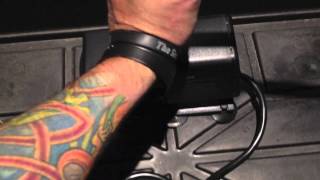
Hydroponic Water Reservoir Issues and How to Correct Them
 A quick look at some of the problems that could arise in your water reservoir and what can be done to fix them.
A quick look at some of the problems that could arise in your water reservoir and what can be done to fix them.
Water Thermometer: https://amzn.to/2LkJFXZ
TDS Meter: https://amzn.to/347MqlZ
pH Meter: https://amzn.to/37c2Iw2
pH Up / pH Down: https://amzn.to/3acO3CG
Want to support the channel and get early access to all our videos? Join our Patreon at: https://www.patreon.com/weedinapot



I love your channel. But I would like to point out to anyone thinking about using distilled or R/O water. Please remember that both have a tds reading of absolute zero. This means that it’s just plain water and nothing in it..Good right…WRONG. H2O on it’s own will fight to join as one with anything it comes into contact with. This means that distilled water and R/O water which is also the same thing, act like acid until they have taken in a suitable amount of minerals. Which are found naturally in spring water. As it is filtered through the earth. So you could go two ways about adding something to your distilled or R/o water source. If your using hydroponic then obviously and in most cases you would add in your bottled nutrients which is fine. However if you are in flush for hydroponics, well just adding in plain distilled or R/O water will certainly strip it of a lot more than nutrients. So you can simply add just a few river rocks or preferably any smooth stones you could find along a creek or happen to dig up. These are the very rocks that are found in springs. Some of the more expensive R/O water filters have a final filtration through such pebbles or minerals themselves. Just be safe before using distilled or R/O water. I find too often people using it for everything even in a humidifier is bad when you place them close enough to your plants not knowing they will try and strip minerals and nutrients from the leaves when they come in contact with them. Then there you are thinking it could be one deficiency or another and it wasn’t any of them. Treating the incorrect mistake will only result in more mistakes. But that’s life you live and you learn. You die and then you wake up and realize "hey I could die, but i will never be truly dead. I was in a spider’s web of gods love" acronym for B.asic I.nstruction B.efore L.eaving E.arth and the rest will fall into place. I love you so very much.
Great content great video man
Are you sure of the reliability of your PH and TDS testers. I had exactly the same two as you, but after comparing the results with a friend’s professional testers, I found that there were very big differences, and I switched.
The PH tester was giving 1 PH more, sometimes it was giving completely crazy numbers… and the TDS tester had 200-300 PPM less depending on the measurements, same result when calibrating the testers.
The PH testers are the most sensitive and the probe must be made of glass and kept in a liquid permanently after use.
Concerning the TDS testers, the best is to use an EC tester, because according to the manufacturers the PPM can be very different from one brand to another because of the three conversion factors used by the brands: 0.5, 0.65 and 0.7).
I know it costs more than 5$ each on amazon, but when you want to do hydroponics seriously, you have to invest in serious and reliable equipment like Hanna, Bluelab or Milwaukee.
First 😁 super video bro
200tds too high? That’s about 313 us/cm my tap water is 800 us and I’m fine no cal mag for me. Great video as usual though
Those some ugly ass plants. WHY WASTR YOUR TIME ON SOMETHING LIKE THIS..not just the ugliness of it..More of the size and just 1..Lol grow a half zip for personal use lolzzzz..sorry man
Great tips 💯
I’ve heard 80 degrees is too hot ?